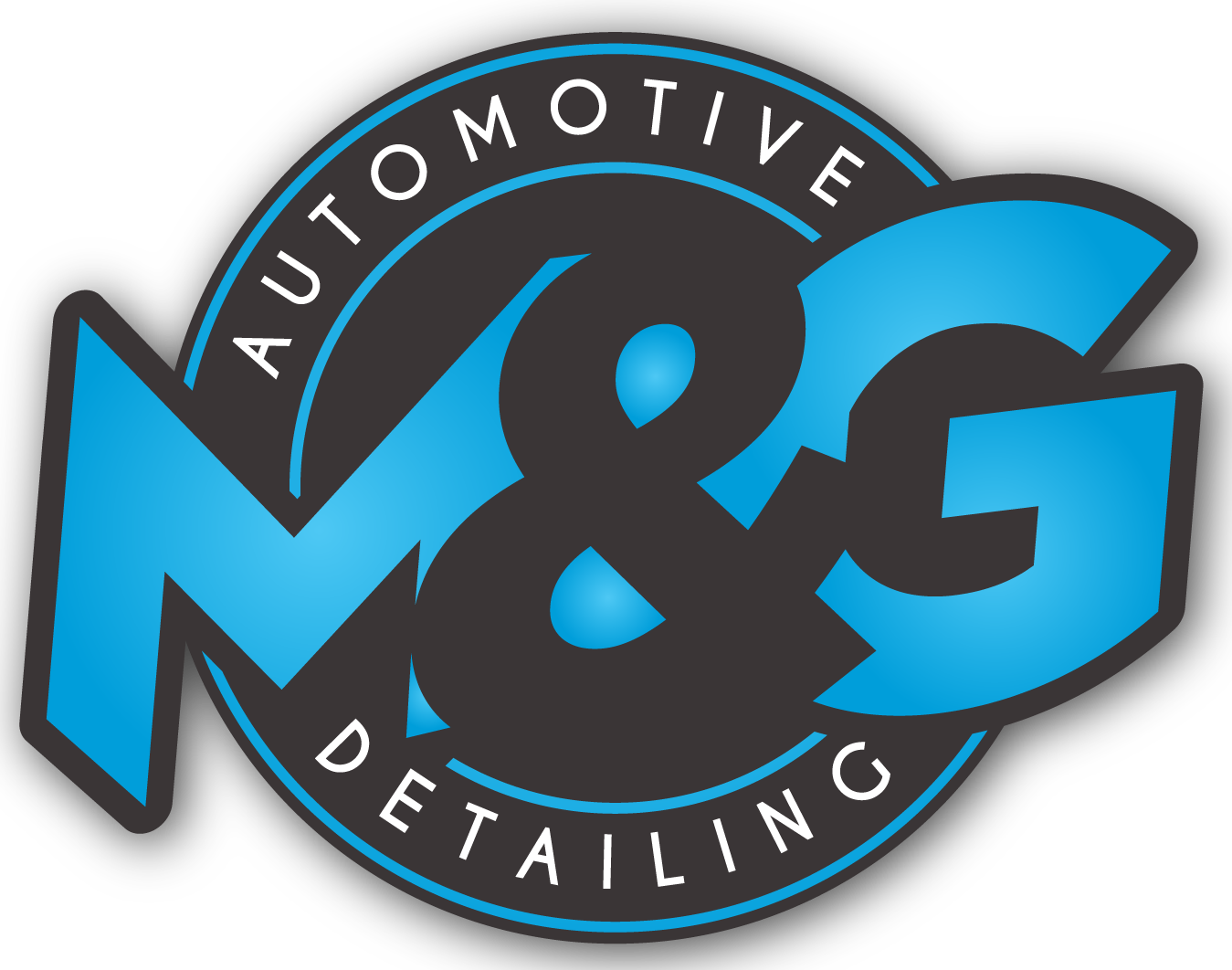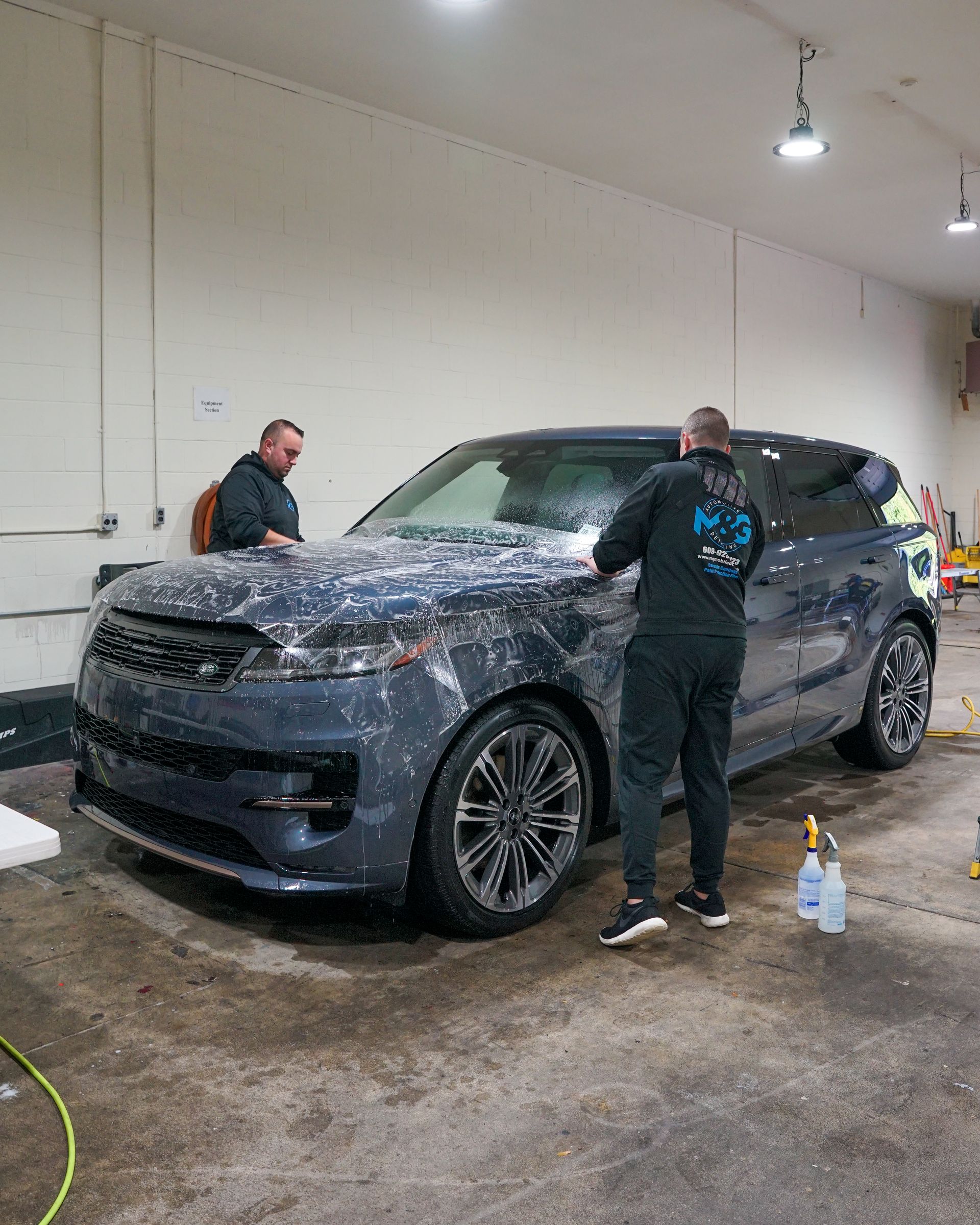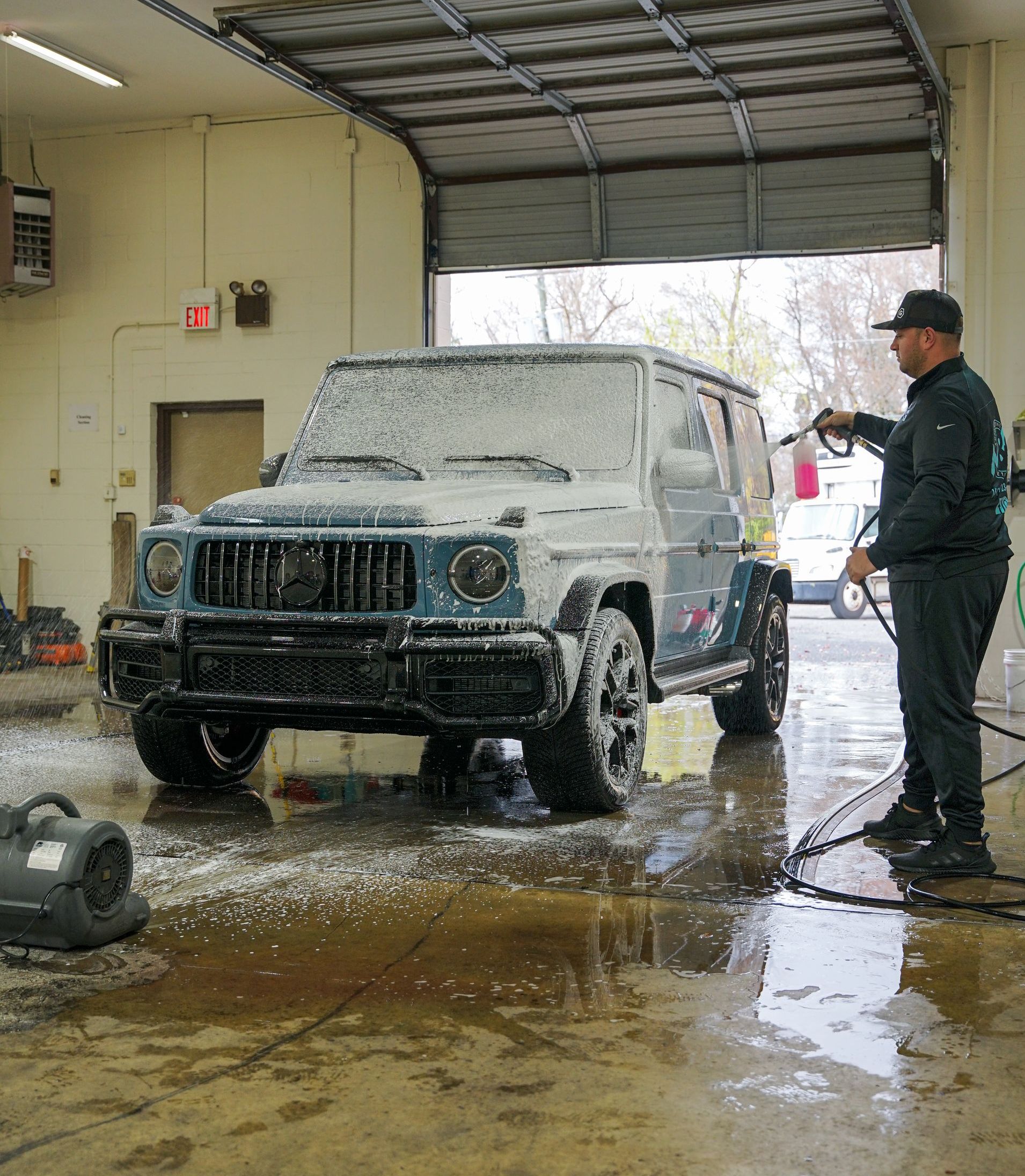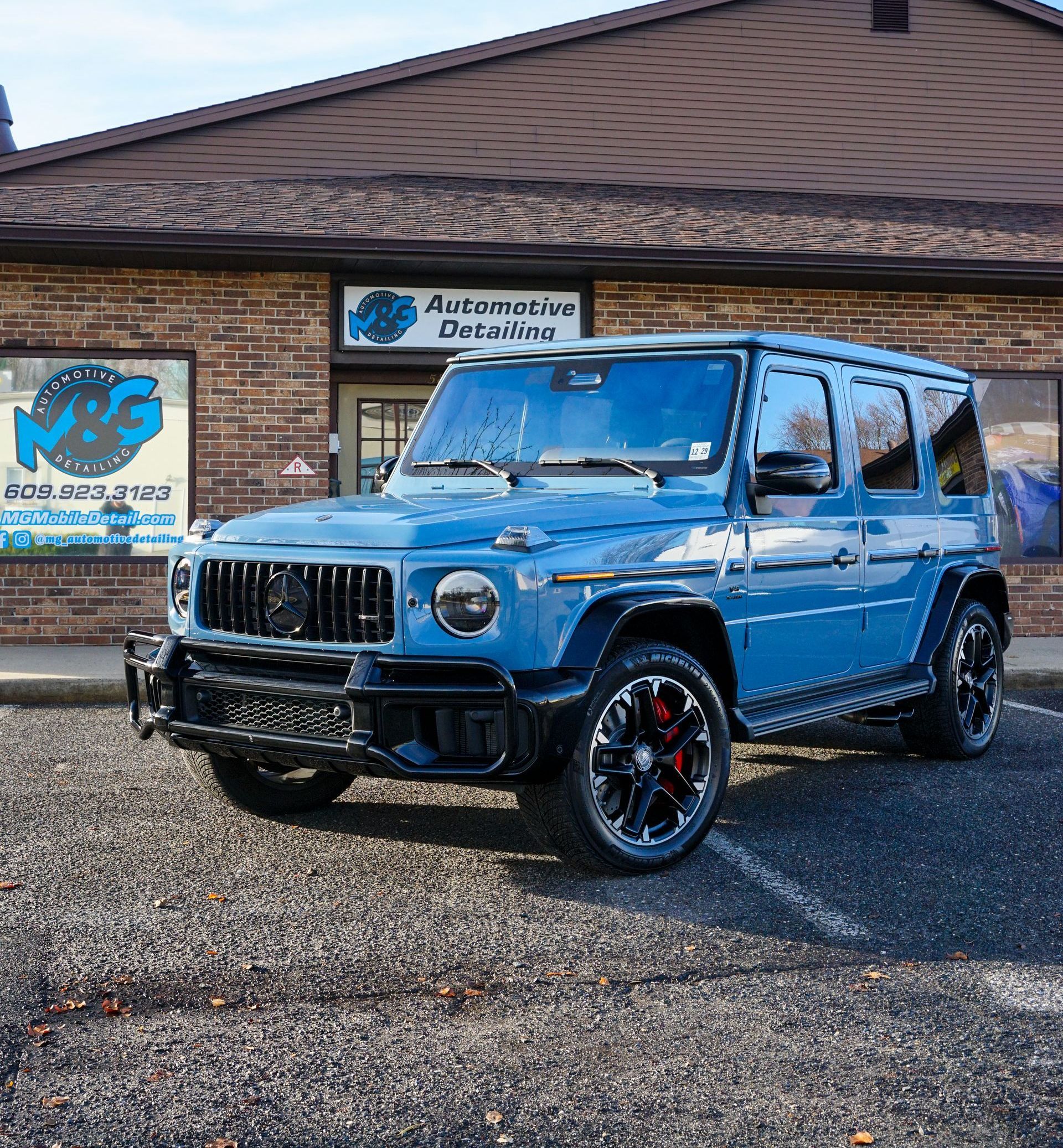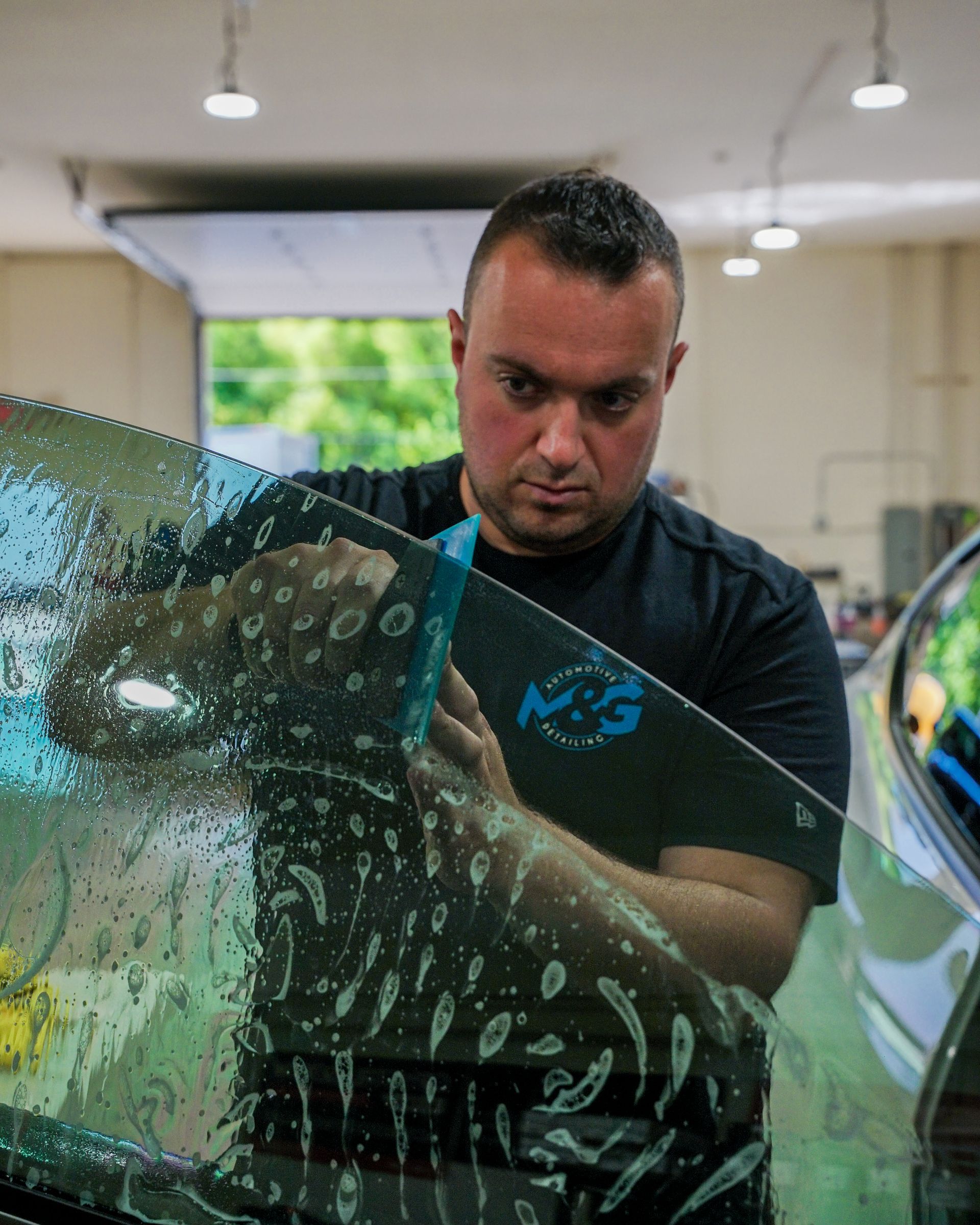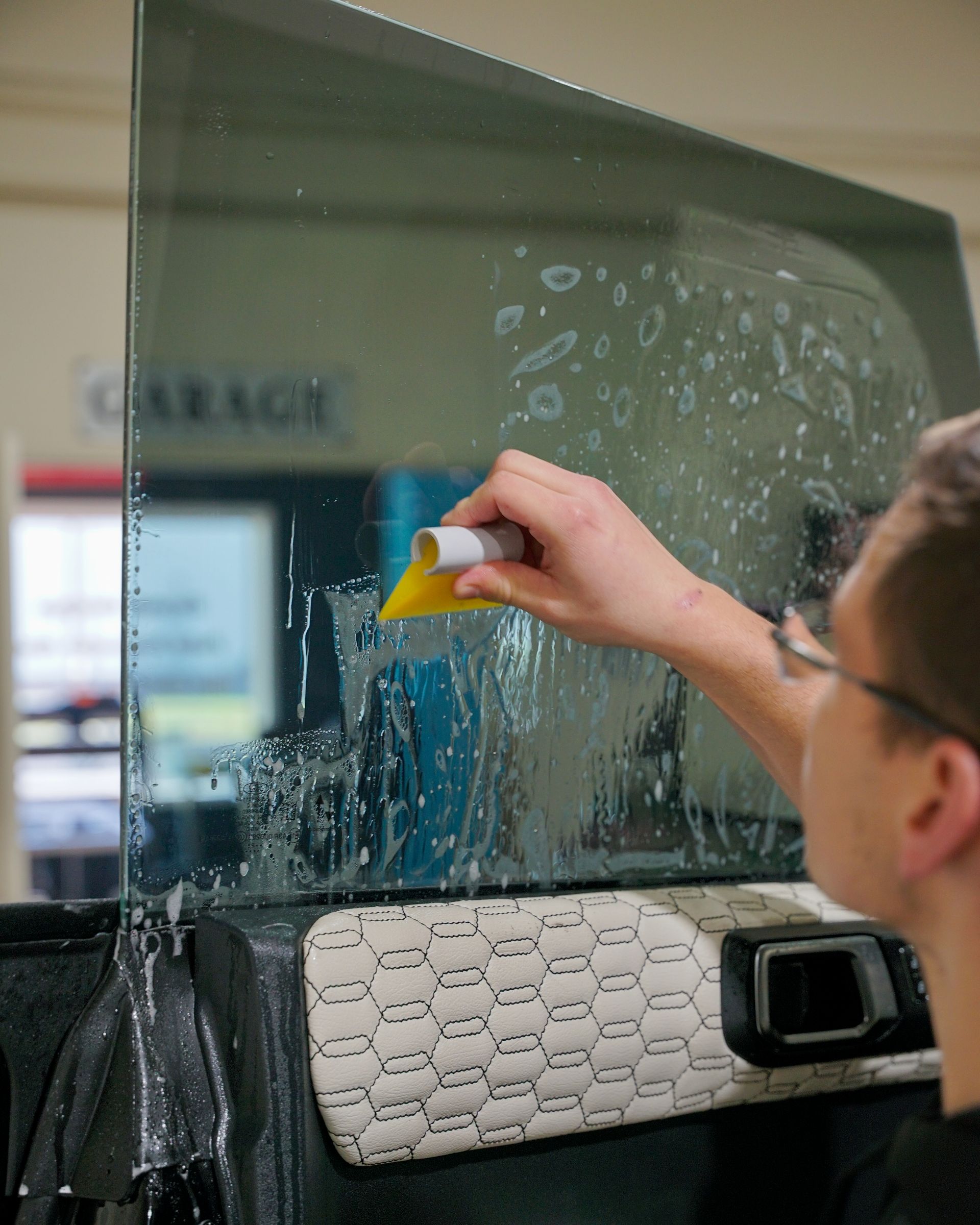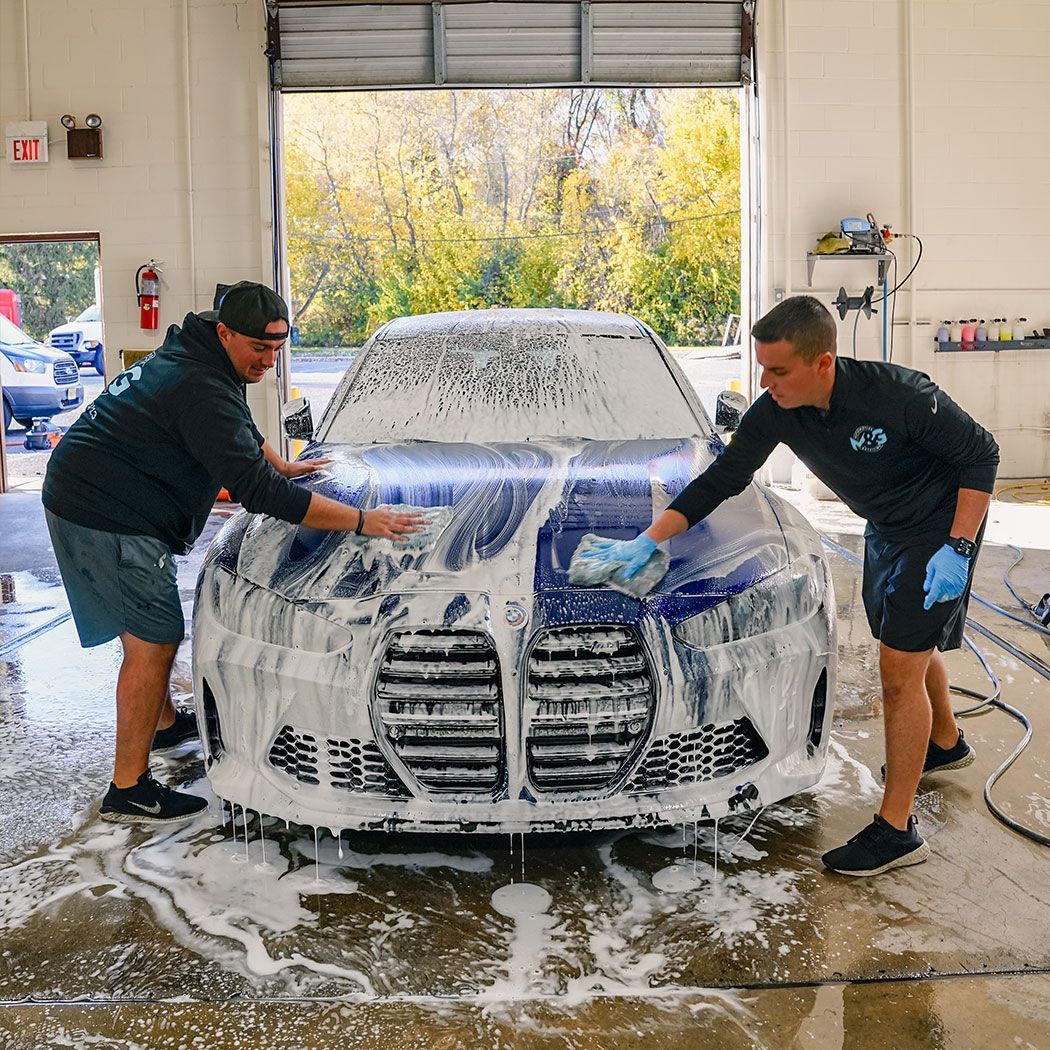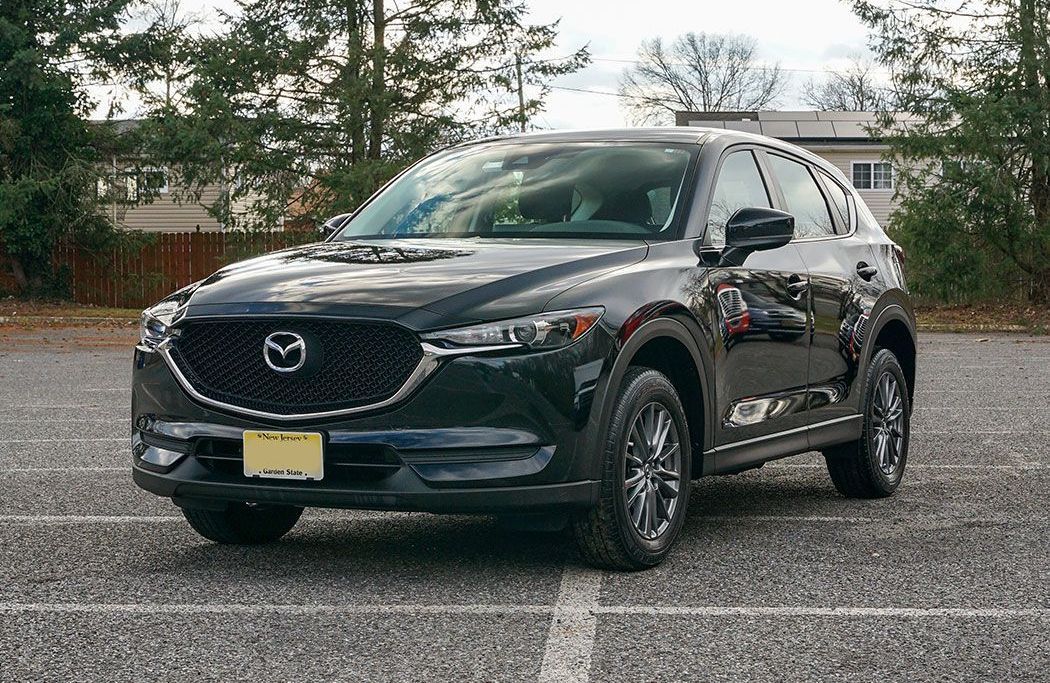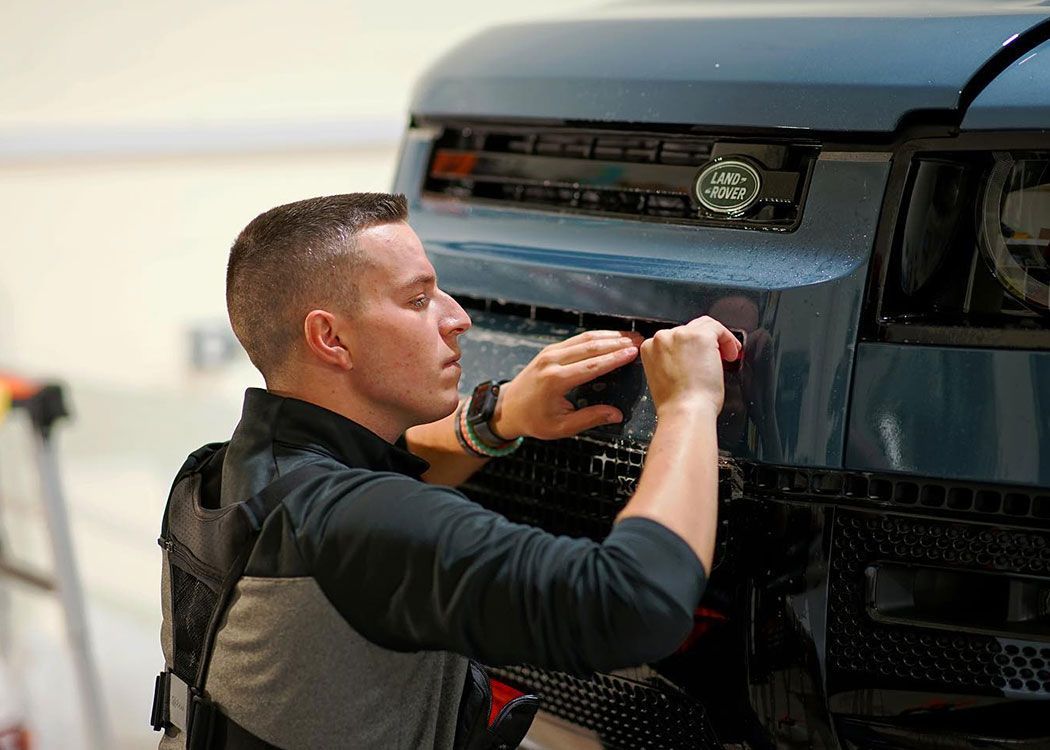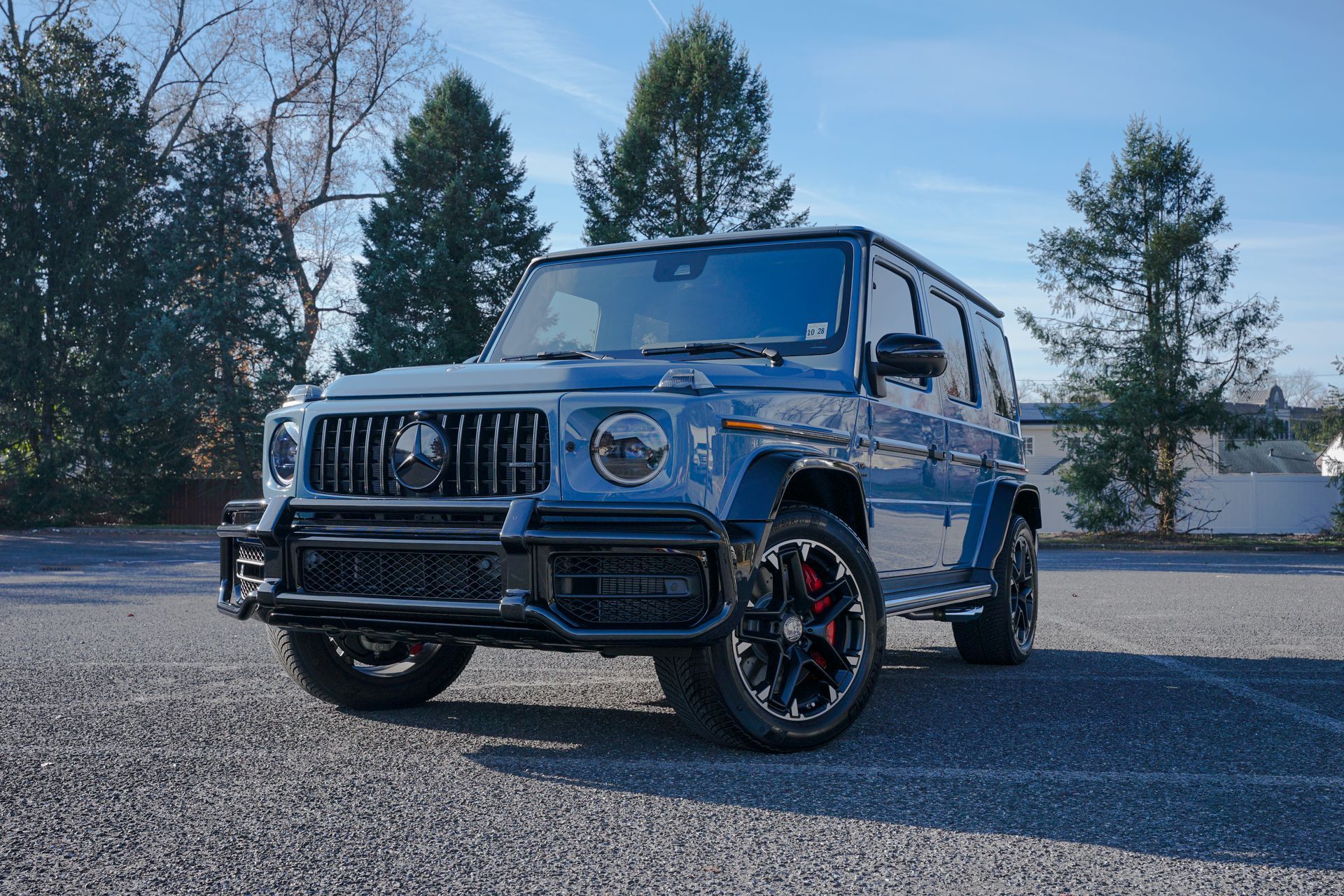M&G Automotive Detailing, Ceramic Coatings & Paint Protection Film
START YOUR M&G DETAILING EXPERIENCE TODAY
Our Auto Care Services Here at M&G Automotive Detailing!

Paint Protection Film
Thinking about all the potential threats posed to your paintwork and other vulnerable exterior surfaces? Stop treating driving like an arduous, stressful process and call up M&G Automotive Detailing for a durable STEK Paint Protection Film today! We protect your finish and more with a self-healing urethane shield that handles all types of minor surface defects.

Ceramic Coatings
Why strain yourself trying to keep your vehicle clean when you can just as easily get a certified Gtechniq Ceramic Coating for your automobile here at M&G Automotive Detailing of Cherry Hill, New Jersey. Watch how our paint protection packages expertly repel environmental messes with ease.
Vehicle Detailing
At last, proper vehicle care that is sustainable! Here at M&G Automotive Detailing of Cherry Hill, New Jersey, we have a total exterior decontamination process that will heighten the quality of your car, truck, or SUV and package detailing that pairs the perfect interior detailing regimen with exterior enhancements.
What Makes M&G Automotive Detailing the Best in South Jersey?
Welcome to the M&G Automotive Detailing Family, your trusted destination for premium paint protection in South Jersey! We are a team of dedicated professionals with a genuine passion for safeguarding new vehicles and enhancing the beauty and durability of older ones.
Our commitment goes beyond delivering exceptional service – we aim to foster lasting relationships with our clients. Our goal is to not only educate you about our services but also to build a connection that lasts for years. At M&G, we are your reliable one-stop shop, ready to assist you in protecting your new vehicles or rekindling the love for your older ones. Let us be your partners in maintaining and enhancing the appeal of your vehicles!
Relax While We Work
While your vehicle is being serviced, you’re welcome to unwind in our premium customer lobby. We offer complimentary Wi-Fi so you can stay connected or catch up on work. Fresh coffee, a variety of beverages, and tasty snacks are always available for you to enjoy.
We believe your experience with us should be comfortable from start to finish. That’s why we’ve designed our lounge to feel inviting, relaxing, and convenient. Whether you’re here for a quick service or a longer appointment, we aim to make your wait as enjoyable as possible.
MEET THE TEAM
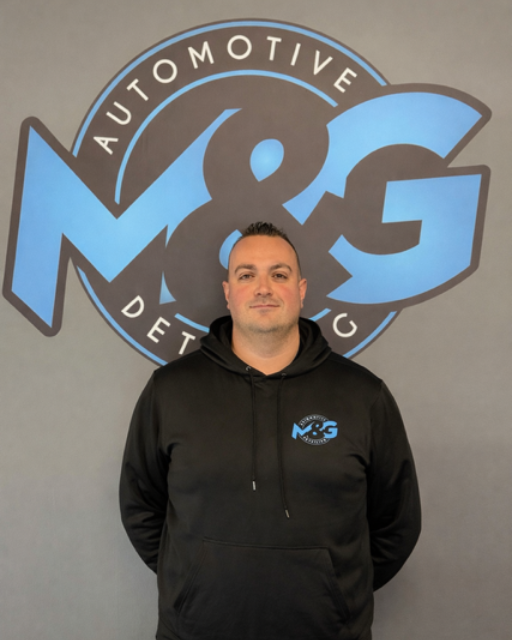
Matt
Owner/ Lead Tinter
Matt is one of the owners of the shop and oversees front-end operations, including customer service and day-to-day management. He also manages and supervises all window tinting services and plays a key role in creating and producing the shop’s social media content.
Outside of work, Matt is married with twin boys and is a devoted Eagles and Phillies fan. He enjoys watching sports, playing golf, and spending time at the beach with his family and going out to eat at his favorite bars and restaurants.

Greg
Owner/ Lead PPF Installer
Greg is also one of the owners and serves as our Lead Paint Protection Film installer. He is responsible for quality control on every vehicle that leaves the shop and oversees all back-end shop operations to ensure everything runs smoothly and efficiently.
Outside of work, Greg is married with one daughter and enjoys spending time with his family. In his free time, he loves playing golf, watching the Phillies, detailing his own vehicles, and checking out his favorite local restaurants.

CHRIS
General Manager
Chris is our newly promoted General Manager and plays a key role in the daily operations of the shop, including opening and closing each day. He is also our head detailer, specializing in paint correction and ceramic coating services, and has recently taken on additional window tinting responsibilities—quickly excelling in this area.
Outside of work, Chris enjoys spending time outdoors, playing video games, detailing his own vehicle, and going out with his girlfriend.

TJ
Detail Tech/Shop Lead
TJ was recently promoted to Shop Lead and is an integral part of our day-to-day operations. He is responsible for ensuring the shop is fully prepped and ready each day and plays a major role in our detailing services, including paint correction and ceramic coatings, while maintaining top-notch quality on every vehicle.
Outside of work, TJ is a huge Eagles and Yankees fan who loves attending games and tailgating whenever possible. In his free time, he also enjoys spending time with his girlfriend, watching movies, and checking out his favorite local restaurants.
The Detailing Customer Experience and Quality Vehicle Care Always Come First
Searching for Auto Detailing Excellence? We Are Leaders in the Industry!
Contamination, defects, discrepancies, paint stains, and interior degradation is a thing of the past with the help of our pro auto detailing and vehicle enhancement teams here at M&G Automotive Detailing of Cherry Hill, New Jersey! It is hard to find a trustworthy, trained, and most importantly CERTIFIED auto detailing team, but you get all of this and more with our crew.
Vehicle detailing is NOT an easy endeavor, which is why it is reserved exclusively for professionals at auto detailing studios like ours at M&G Automotive Detailing. Quality, persistence, and intricate techniques all make up the results that meticulous vehicle owners of Cherry Hill, New Jersey enjoy so greatly, and in many cases, these efforts are irreplicable anywhere else thanks to the efforts of our dedicated crew of auto enthusiasts. We hold certifications in Gtechniq Ceramic Coatings, STEK Clear Bra installation, and precise auto detailing and restoration processes.
There is no risk in seeking a price quote from our auto detailers here at M&G Automotive Detailing! Start by clicking below and filling out our FREE quick quote form today and get a price estimate designed to help you plan for your ceramic coating, PPF, or auto detailing appointment with us. Also, be sure to call us directly at (609) 923-3123 with any questions or concerns.
Cherry Hill, NJ Auto Detailing - We love to serve Your Location!
You cannot go on in a messy, contaminated vehicle and think you are in any way preserving its long-term value. Unfortunately, for years, many owners of different make and model cars have sacrificed maintaining vehicle quality for the sake of cost, time savings, and inaccessibility. Here at M&G Automotive Detailing, serving the following areas, drivers and vehicle owners of all kinds now have local access to paint protection, correction, and interior and exterior auto detailing services:
We hold many certifications in ceramic coatings, paint protection film products, window tinting, and the top-of-the-line automotive detailing services performed at our Cherry Hill, New Jersey shop. To get a price estimate for anything we offer, please click below to call M&G Automotive Detailing now!
CALL (609) 923-3123
